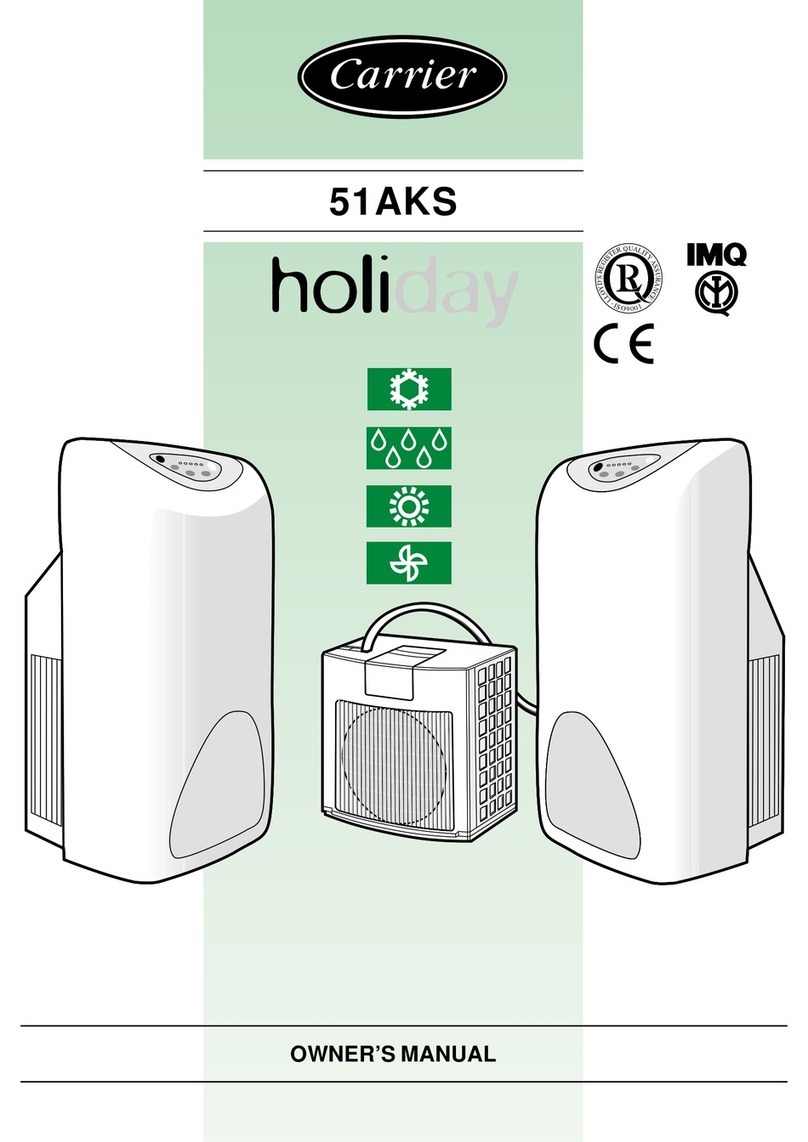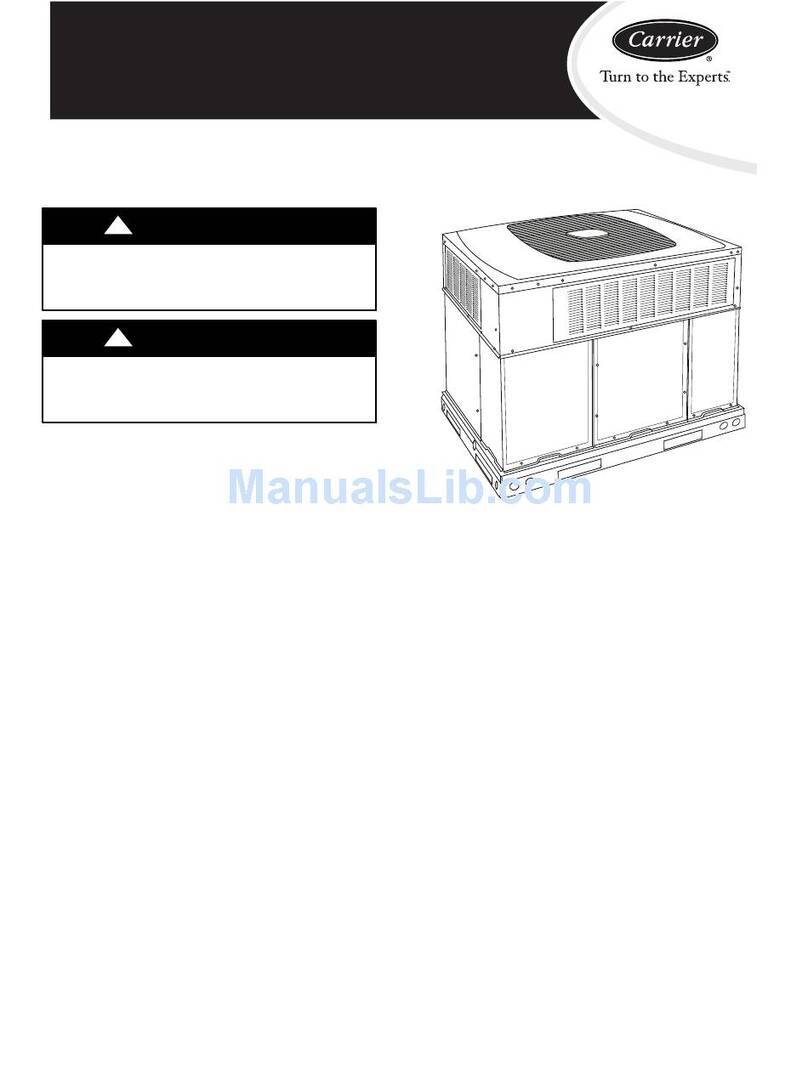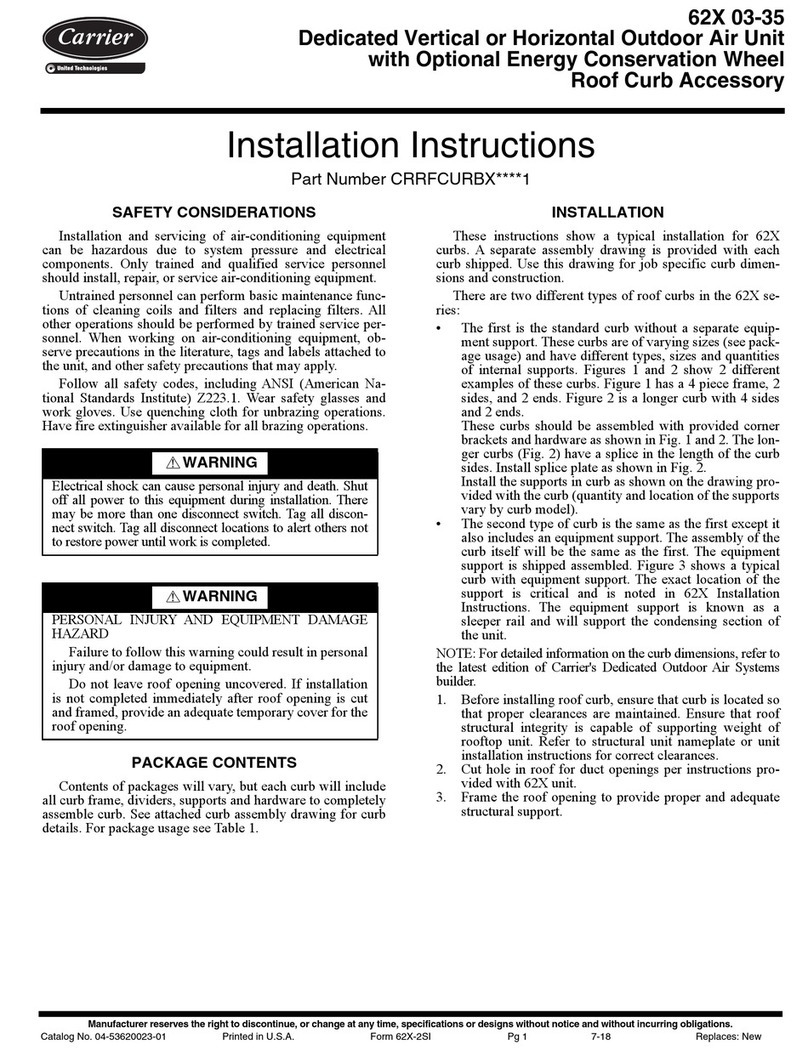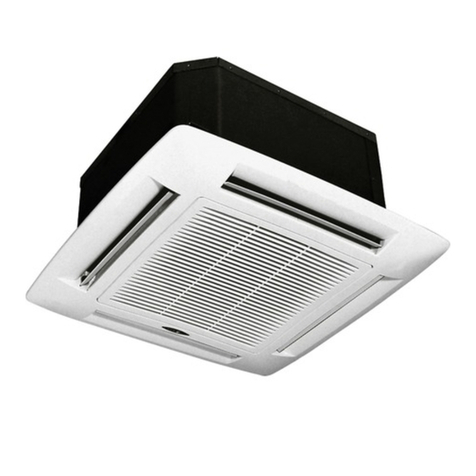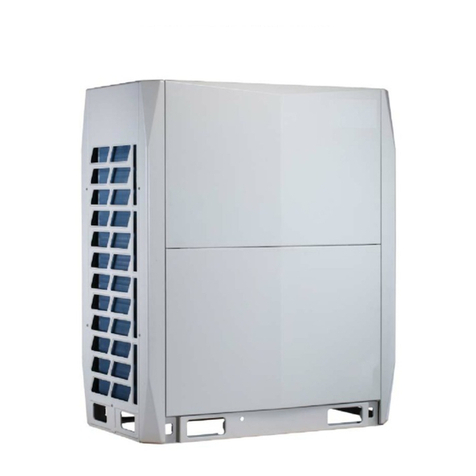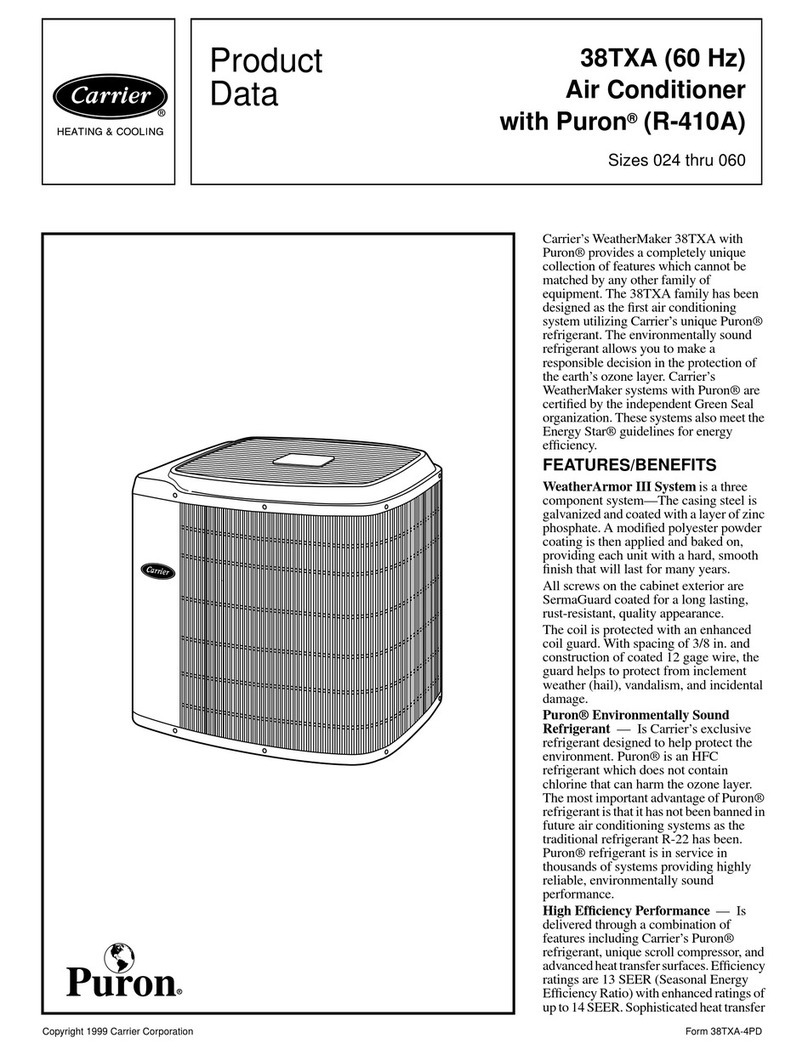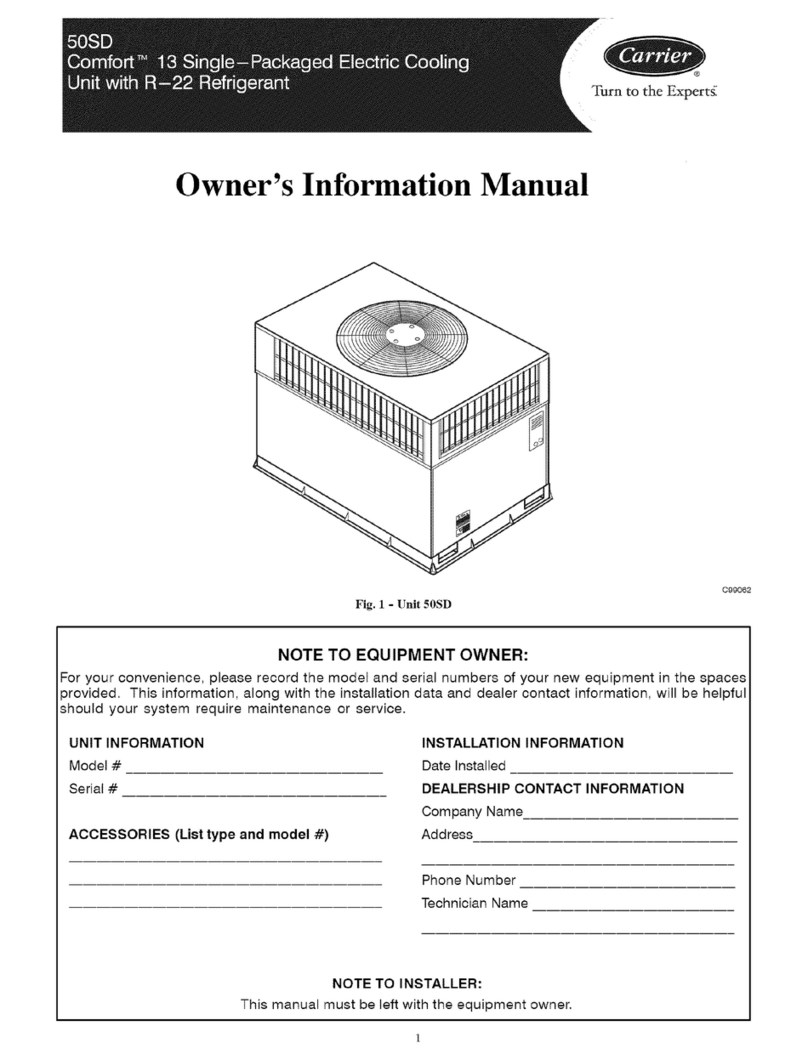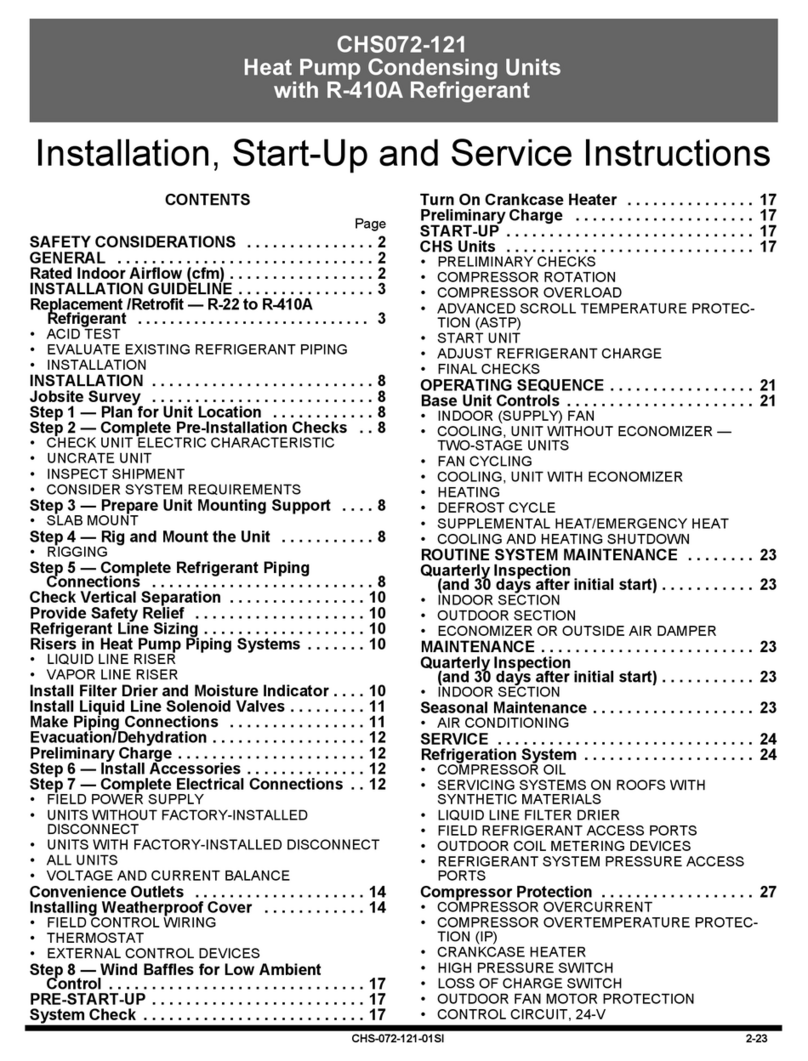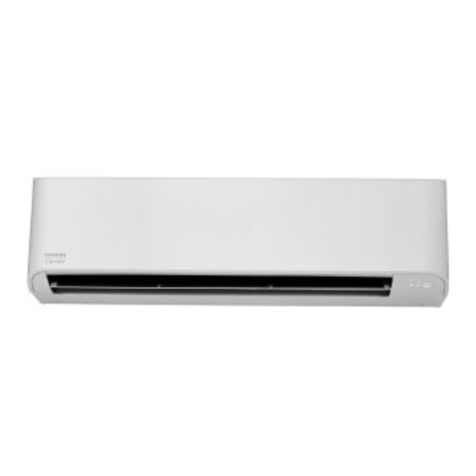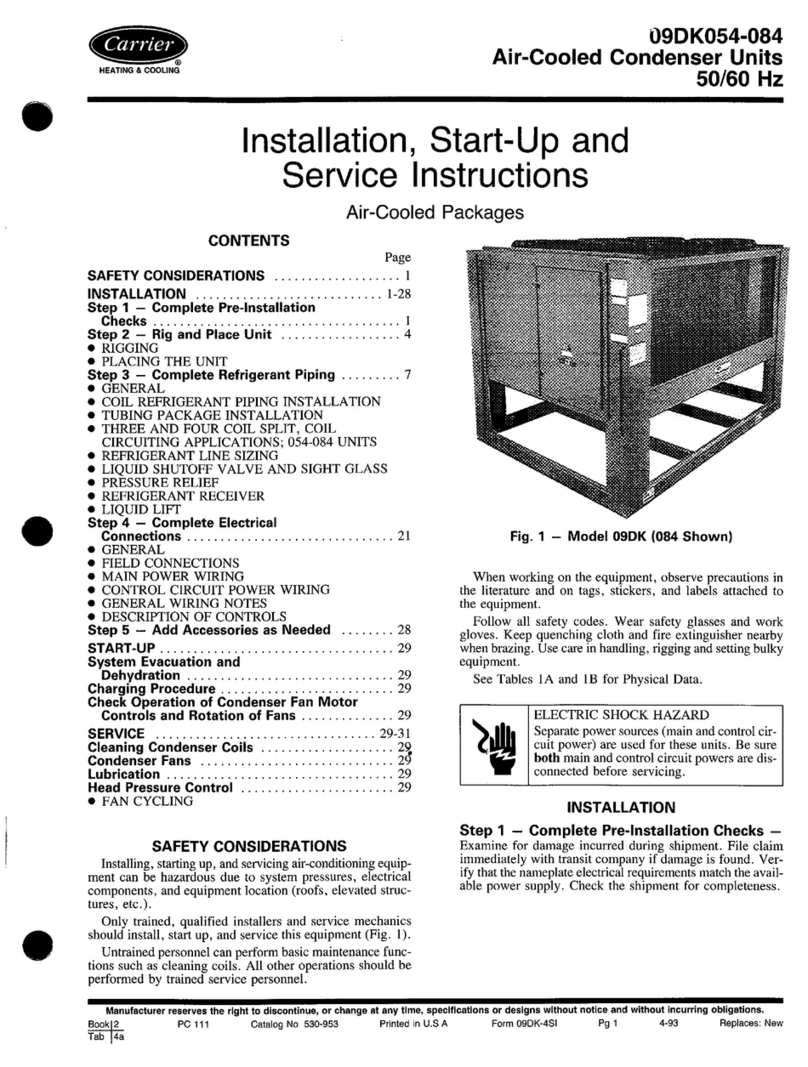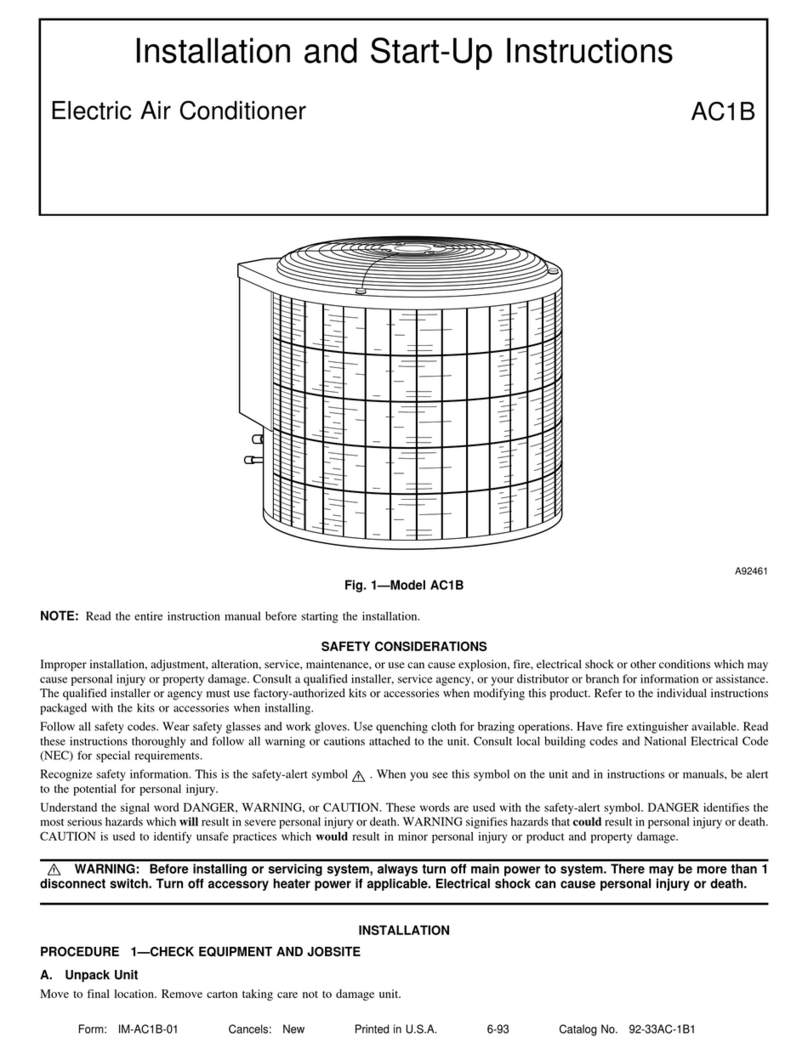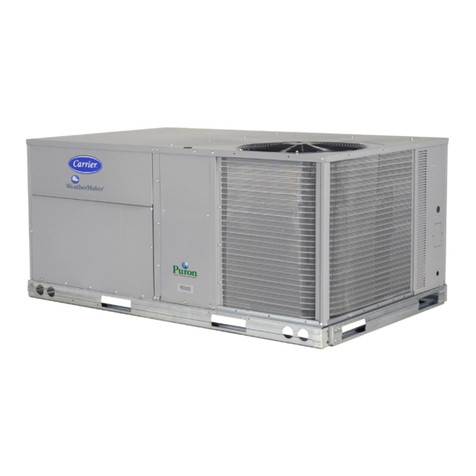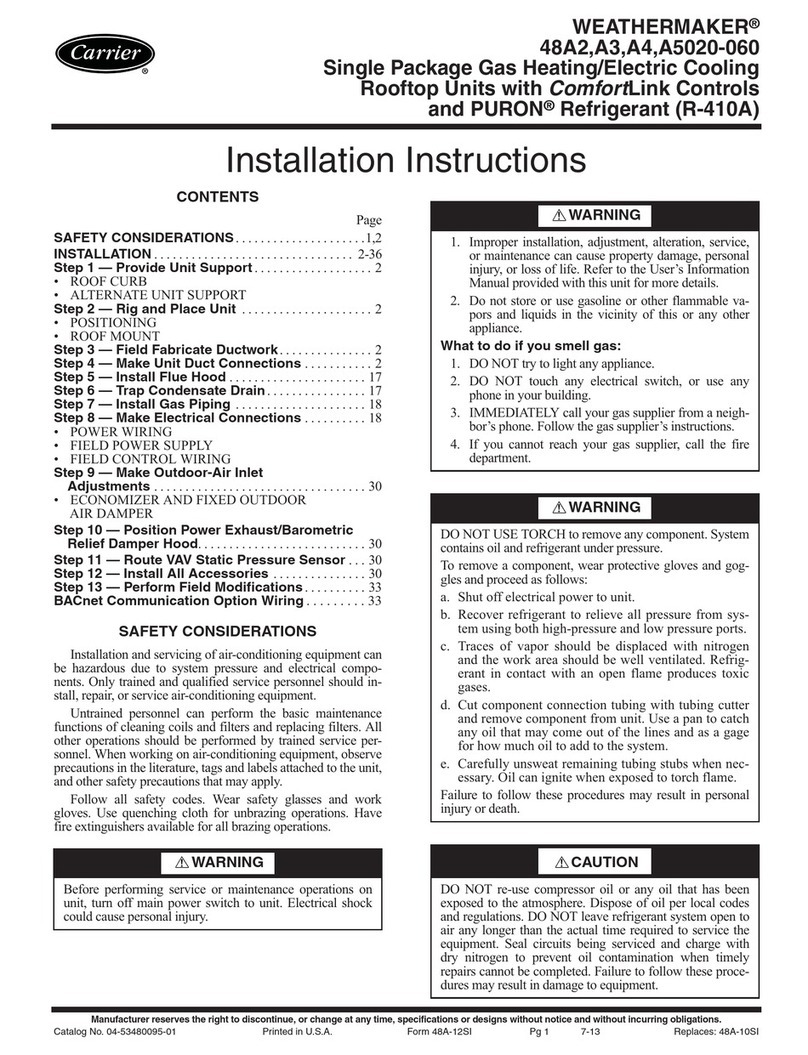
Proceedasfollowsto inspectthecombustionareaand
power-ventingsystemofyourunit.
•Turn off gas supply to your unit.
• Turn off electrical power to your unit; install lockout tag.
• Remove gas component access panel.
• Using a flashlight, carefully inspect the burner areas for
dirt, soot, or scale.
EQUIPMENT DAMAGE HAZARD
Failure to follow this caution may result in damage to
equipment.
If dirt, soot, rust or scale accumulations are found, call
your service technician and do not operate your
heating section.
• When you have completed your inspection, follow the
start-up procedures in this manual to restore your unit
to operation.
PERSONAL INJURY HAZARD
Failure to follow this warning could result in personal
injury.
Components in heat section may be hot after unit has
been started up. When observing flame, be careful not
to get close to or touch heating components.
•Observe unit heating operation. Watch the burner flame
to see if it is bright blue. If you observe a suspected
malfunction or that the burner flame is not bright blue,
shut down the unit and call your dealer.
• Replace gas component access panel.
Integrated Gas Controller (IGC)
The IGC board incorporates an LED that emits a flashing
light to indicate an alarm code. If the furnace section will
not operate and the LED is flashing a code (1 to 9 flashes
in succession), contact your dealer and request service.
NOTE: Make note of the flash code before powering off
the unit. The alarm codes clear after power cycle.
Unit Panels
After performing any maintenance or service on the unit,
be sure all panels are securely fastened in place to prevent
rain from entering unit cabinet and to prevent disruption
of the correct unit airflow pattern.
BEFORE YOU CALL FOR SERVICE,
CHECK FOR PROBLEMS THAT
CAN BE EASILY SOLVED
If insufficient heating or cooling is suspected:
( ) Check for sufficient airflow. Check the air filter for dirt
Check for blocked return- or supply-air grilles. Be sure
they are open and unobstructed. If these checks do not
reveal the cause, call your servicing dealer.
If your unit is not operating at all, check the following list
for easy solutions:
( ) Check to be sure that your thermostat/unit controller
temperature selector is set above the indoor temperature
during the heating season, or below the indoor
temperature during the cooling season. Be sure the
SYSTEM switch in the proper HEAT or COOL position
and not in the OFF position.
( ) Is the electrical supply switch ON'? Are any fuses
blown, or has the circuit breaker tripped'?
( ) During the heating season, check the external manual
shutoff valve. Is this lever parallel with the pipe,
indicating that the valve is open'? Or is the lever at the
right angle, indicating that the valve is closed'? If closed,
has the gas been shut off for safety reasons'? Otherwise,
you may open the valve and follow the start-up
procedures listed in this manual.
NOTE: Before proceeding with the next check, turn OFF
the electrical power supply to the unit. Remove the gas
component access panel.
( ) During the heating season, check the control switch on
the gas valve. Is it in the ON position'? If it is not, be sure
it has not been turned off for the purpose of safety. If no
safety hazards are present, follow the start-up procedures
in this manual.
( ) If your unit still fails to operate, call your servicing
dealer for troubleshooting and repairs. Specify the model
and serial numbers of your unit. (Record them in this
manual in the space provided.) If the dealer knows exactly
which unit you have, he may be able to offer suggestions
over the phone, or save valuable time through
knowledgeable preparation for the service call.
IN CASE OF TROUBLE
If, after performing the above checks, unit performance is
unsatisfactory, shut off the unit and call your dealer.
Dealer's Name
Telephone No.
Unit Model
Unit Serial Number
